As I mentioned previously, over the coming days and weeks you’ll see the occasional post from a fellow reader who has applied to write for OMAAT on an ongoing basis. It’s possible that posts will still be in the publication queue after we’ve announced our decision, so we’ll be publishing these anonymously. We hope you enjoy the different perspectives!
While this wonderful community is all about air travel to a far away land, there’s something to be said for trying to maximize one’s strategy on trying to get around once they’ve gotten there. One of the easiest places to get around in, and my absolute favorite country to visit, is Japan —especially when traveling by rail and using a Japan Rail Pass.
After getting out of college and entering the real world, I’ve gone on numerous vacations to Japan. And in doing so, I’ve learned a lot about the ins and outs of traveling by train and getting to explore both big cities and quiet villages. With that in mind I’m really excited to have this opportunity to share with you a lot of tips to exploring Japan. Let’s get down to business.

Basic Information on the Japan Rail Pass
The first thing to note is that “Japan Rail” is the name of a specific group of transportation companies in Japan, not the name of a national rail line or scheme. Japan Rail (JR) operates an assortment of trains and busses, both within and between various Japanese cities. So when purchasing a JR pass, you’re buying transportation on JR-operated routes, and won’t be able to use these passes on lines managed by other companies, or on the Tokyo metro.
But the JR route-network is incredibly extensive, and can easily cover a broad range of excursions throughout Japan. There are many flavors and varieties but when it comes to getting the BIGGEST bang for your buck, the most cost-effective version is the nationwide pass.
The Japan Rail pass is sold as an exchange voucher by selected travel agencies outside of Japan in 7, 14, and 21 day variants and either for ordinary (coach) and green (business) classes. These vouchers are then later exchanged for an actual rail pass at certain stations (listed in the pamphlet) in Japan.
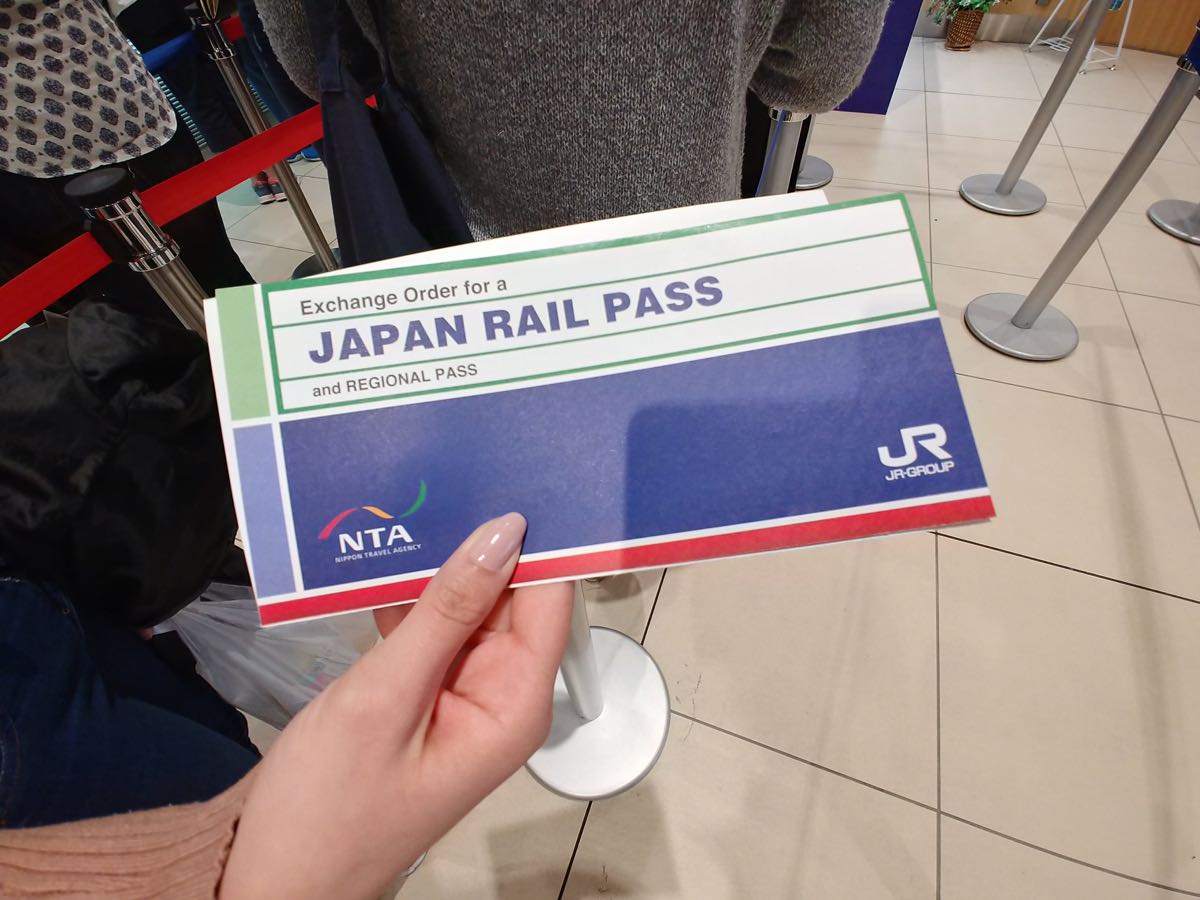
The agencies convert the prices from Japanese Yen to their respective sales areas so each travel agency will vary in how much they charge for a rail pass . Below is a chart of averages amongst the three biggest pass sellers in the United States.

Depending on the agency, they may also pass on shipping charges so keep an eye out for free shipping promotions if the price is right! Children’s passes are half the cost of their parental unit equivalents.
Passes technically can be bought in Japan but they’re more expensive and Japan Railways (JR) isn’t good about taking credit cards when buying any of their tickets so, it’s best to buy your exchange voucher from an authorized travel agency ahead of time.
In addition to this, other important rules include:
- Your exchange voucher must be exchanged for a rail pass within 3 months of purchase
- You must enter the country under a short term tourist visa (sorry foreign exchange students)
- You don’t need to use it the day you exchange it, but you do have to declare what day you will start using it
- Seat reservations are included with the rail pass, and you can make reservations as soon as you have the pass in hand
- Each day of the pass counts as a calendar day, not a 24 hour period; however, if you’re through the fare gates on the 7th day before midnight, JR will allow you to continue your journey to your final destination so long as you don’t leave the fare paid zone: more on that in a bit
The pass works on most JR trains, JR local (not highway/long distance) buses, the JR Ferry to Miyajima, and a smattering of other private rail lines that are listed in your pass when you receive it.
There are a list of exclusions where a surcharge is needed as trains run on tracks not owned by JR or the Rail Pass will not be accepted at all, like the Nozomi and Mizuho class of bullet trains that run between Tokyo and Kagoshima, but this just means taking a slightly more leisurely train. Well, as leisurely as blasting through the Japanese countryside at 186mph can be.
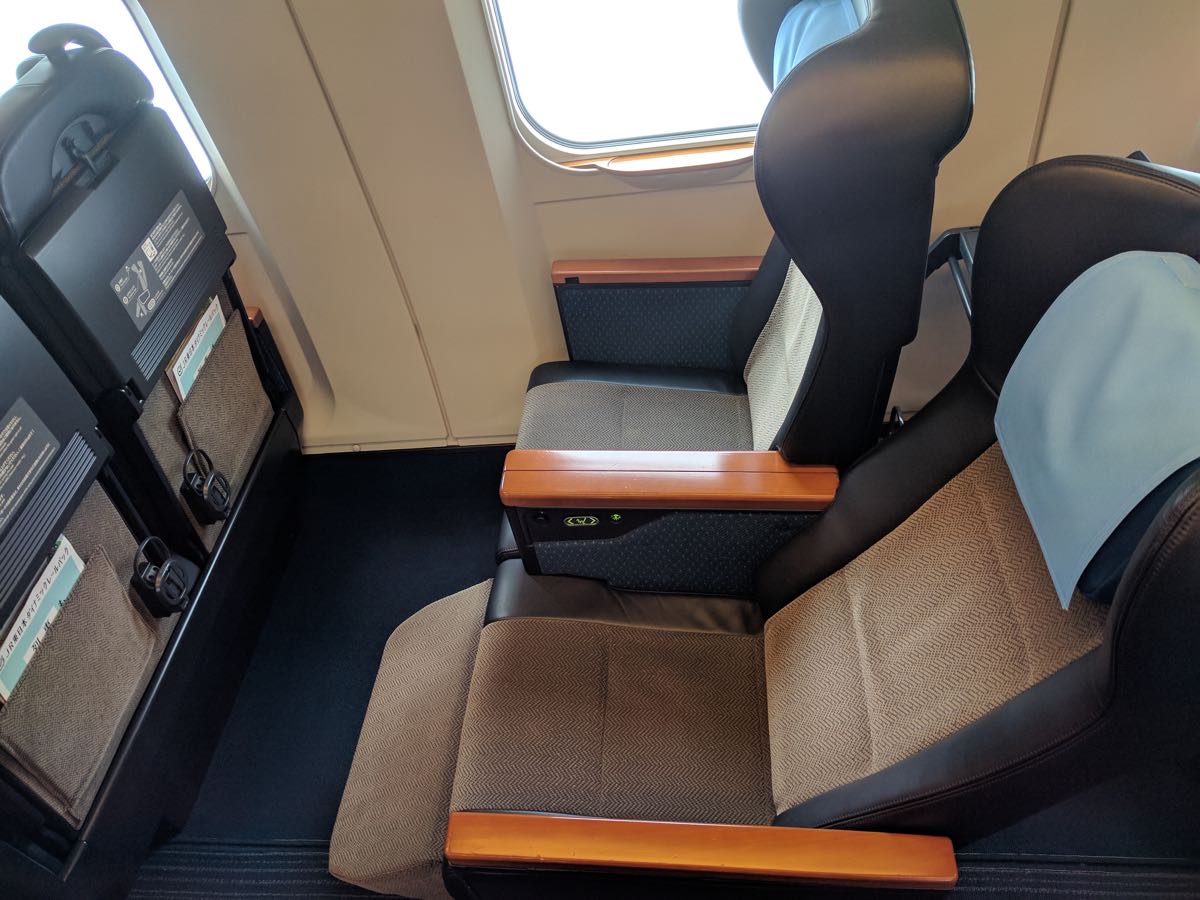
Using points for a JR Pass
It just wouldn’t be right if we couldn’t mention a way to further make this an even better deal now could we? The more traditional miles and points currencies can’t be redeemed here, but this is a fabulous use for Capital One points. Specifically for the Capital One Venture Rewards Credit Card, Capital One VentureOne Rewards Credit Card, or Capital One Spark Miles for Business.
These cards work on a cash back system with a bonus towards buying travel; so, these rail pass purchases can be “erased” if you wanted to use your points when buying from an authorized travel agency.
In one scenario, if you had the Capital One Venture card or Capital One Spark Miles for Business Rewards card, and had 50,000 points (miles), you could redeem them to get a 14 Day Ordinary Class or 7 Day Green Class pass for free! A 14 Day Green Class pass would only cost you an additional $90 or so out of pocket with the same redemption!
Planning with a JR Pass
Now, the 7 day pass will pay off itself with just a round trip from Narita Airport to Osaka, and while these cities are amazing in their own right, there is so much more to explore in this country!
With a rail pass, it’s very easy to get to far flung parts of the country that many folks don’t know about and in doing so: find the true heart and soul of Japan. With that in mind, here are some sample itineraries of places I’ve been to before and how you can maximize your pass usage.
Sample Itinerary: Traveling to the Sapporo Snow Festival.

With this itinerary, you can check out sights such as the Mausoleum of Date Masamune, former feudal warlord from the Sendai area on your first days in Japan.
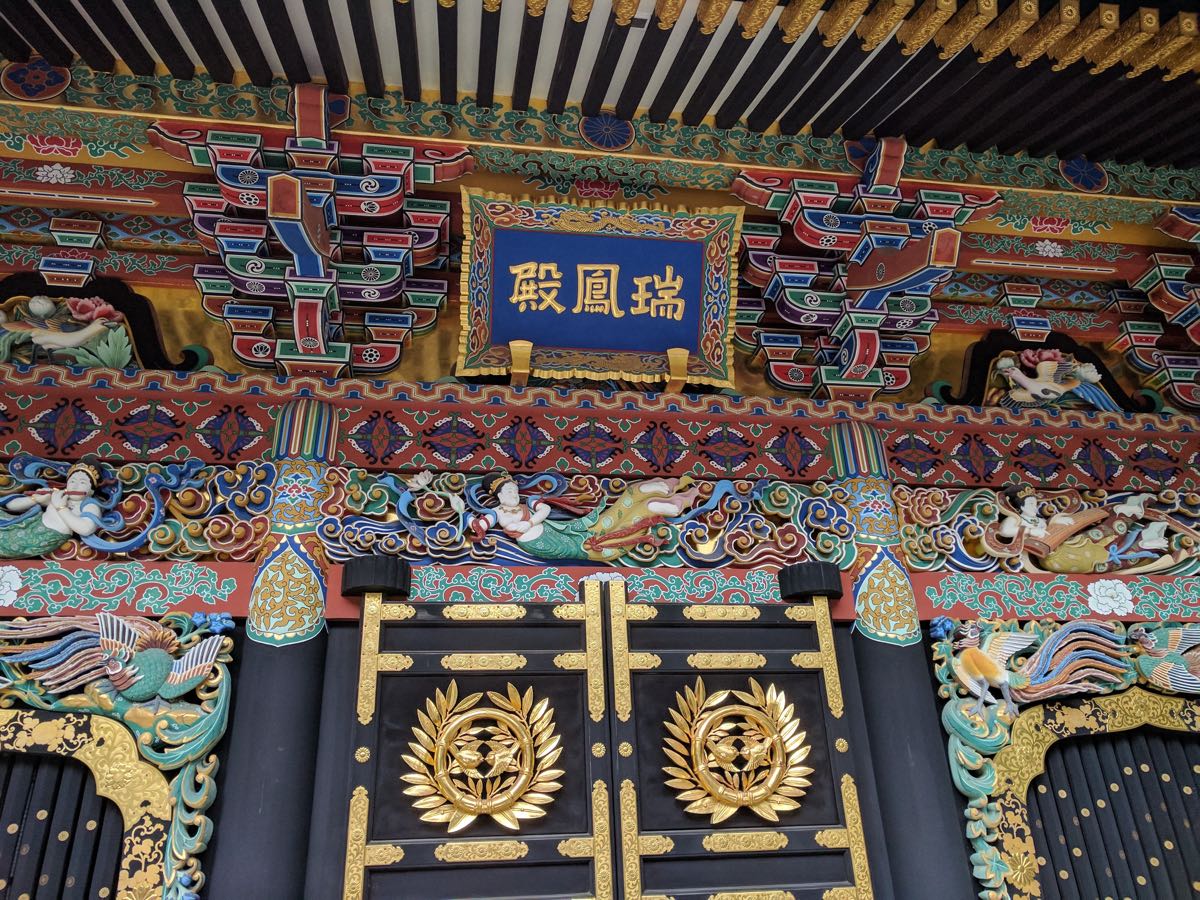
And then, take off on a bullet train afterwards for a night’s stay at Tsurunoyu Onsen, a hot springs resort deep in the mountains dating back to the 1600s. One thing to note, for this onsen, you’ll need to take 2 buses to get here which are not covered by the Japan Rail Pass. But, for this scenery: it’s totally worth it!
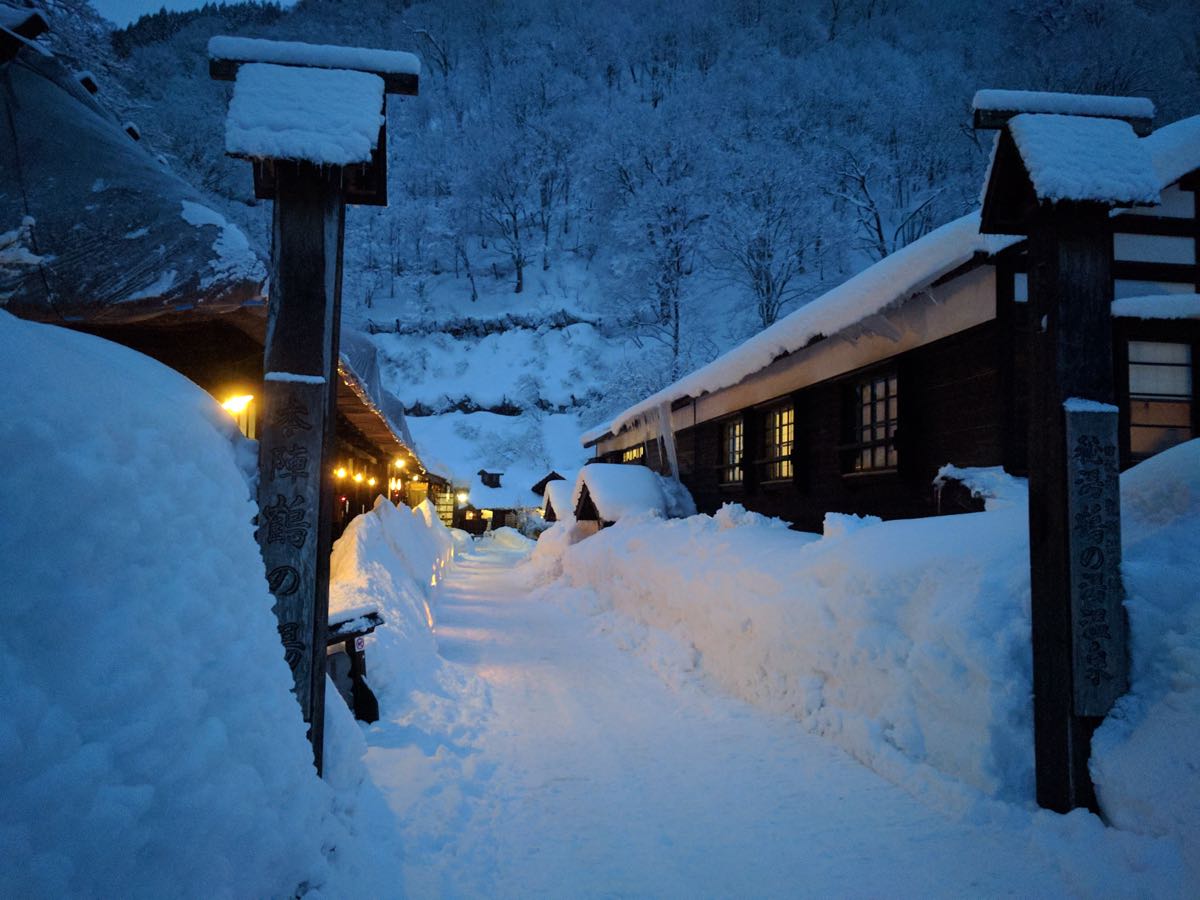
And once you’ve gone through the world’s second longest undersea tunnel, you can make Sapporo or a nearby city as a base while you explore all the winter festival action in Sapporo, Otaru, and Asahikawa! Plus in doing so, you might be able to redeem a string of award nights or (in my case) take advantage of the 4th night free with the Citi Prestige.
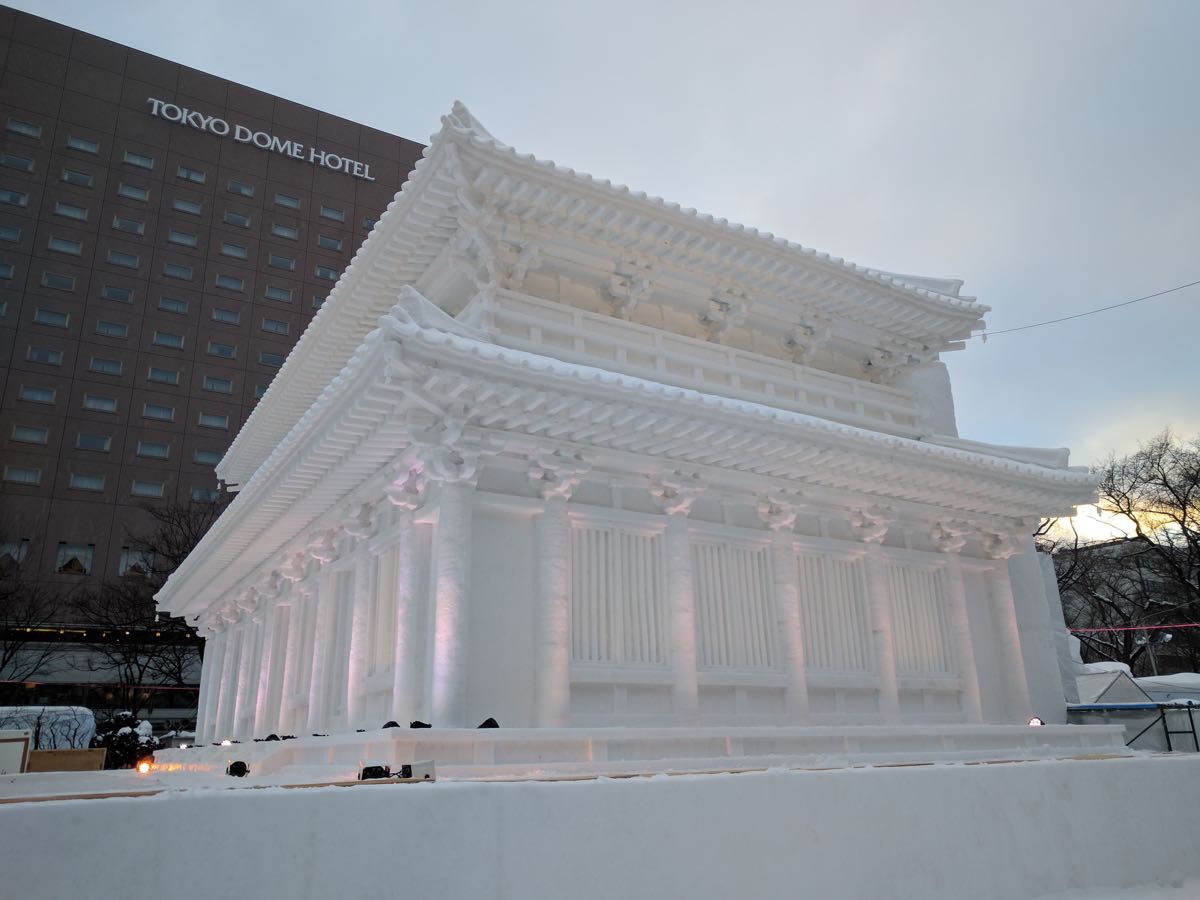
Sample Itinerary: Going south, and getting 8 days of travel for the price of 7
While the above itinerary was a lot of fun to transform into reality, if you’re vehemently anti-snow no matter how “cool” it looks, then you can just “let it go” (♫let it go~♫) and head south instead.
And there’s a very interesting way to hack the Japan Rail Pass and add one more day of travel for free.

This particular itinerary allows you to see a whole lot of ancient castles, temples, and cities, while going around the central and southern parts of Japan.

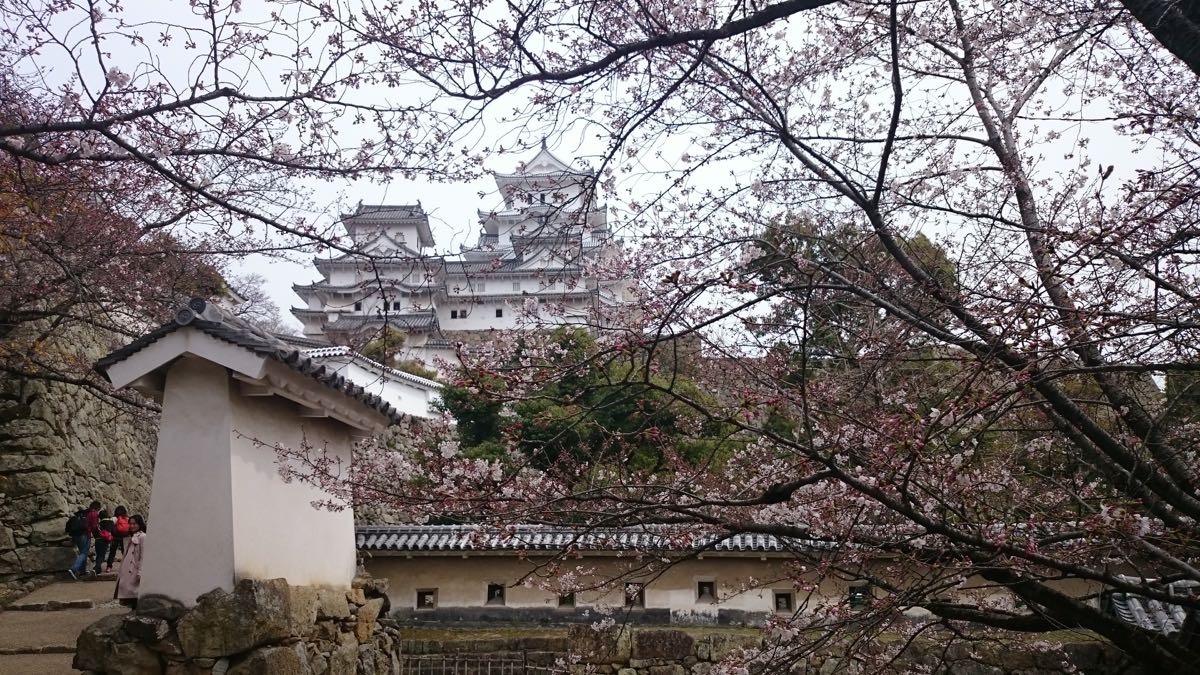
As I mentioned above, if you happen to start a train journey before midnight on the 7th day of your pass, JR will allow you to complete your journey to your final destination provided you don’t leave the ticketed area. With that in mind, when I was running through this trip I took advantage of this rule and rode on JR’s last remaining night train: the Sunrise Seto/Izumo.
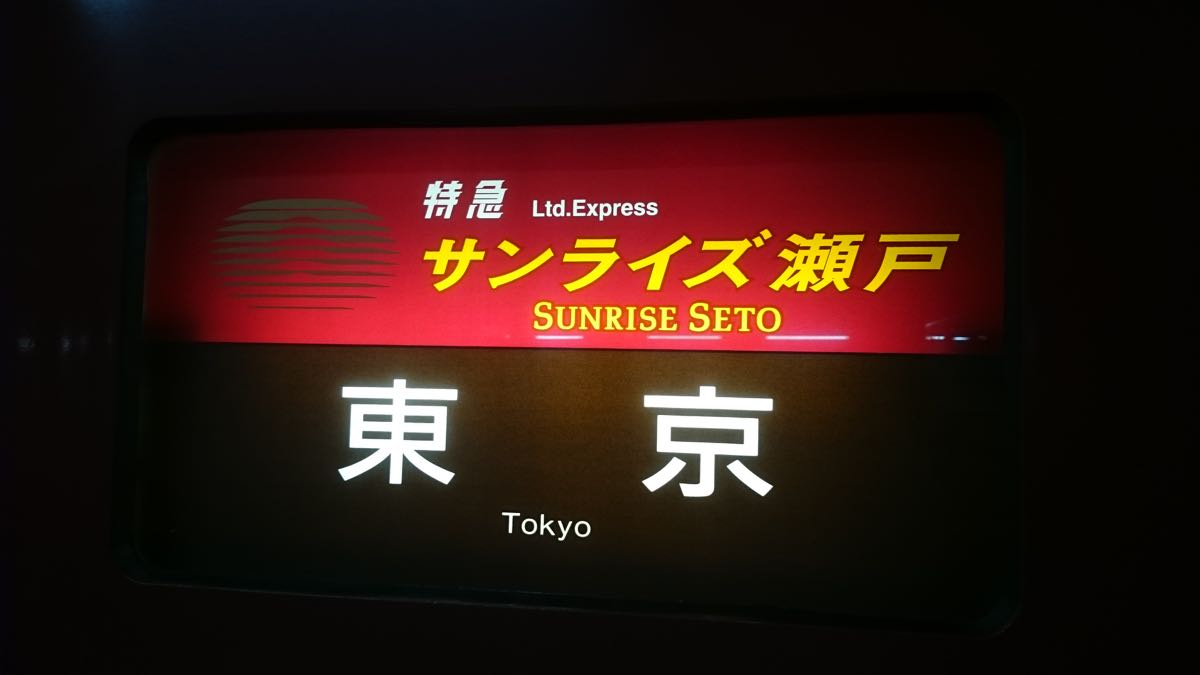
The easiest place to get on is on Okayama where the Sunrise Seto and Sunrise Izumo join up. Plus, before you hop on, you can stop by the “Black Crow Castle” before getting ready to say goodbye to Japan.
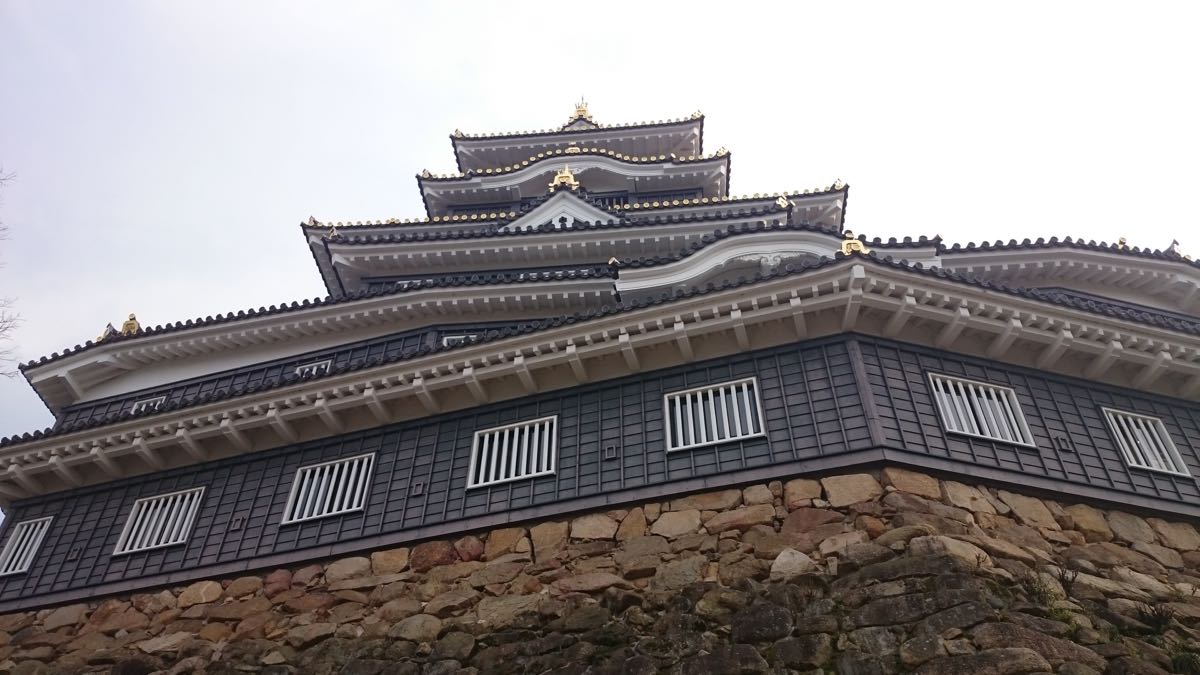
Beyond being the only night train in Japan, this train offers an extremely unique proposition for the truly frugal traveller. These “Nobinobi seats” are completely included in your rail pass, and can be reserved ahead of time.
The downside: the “seats” are a actually a long section of carpet that are placed perpendicular to the direction of travel that you can lie down on. They are… a bit spartan, as you’ll need to bring your own creature comforts like pillows or blankets, but there are electrical outlets, air vents, and a shower/slip n’ slide onboard available for use.
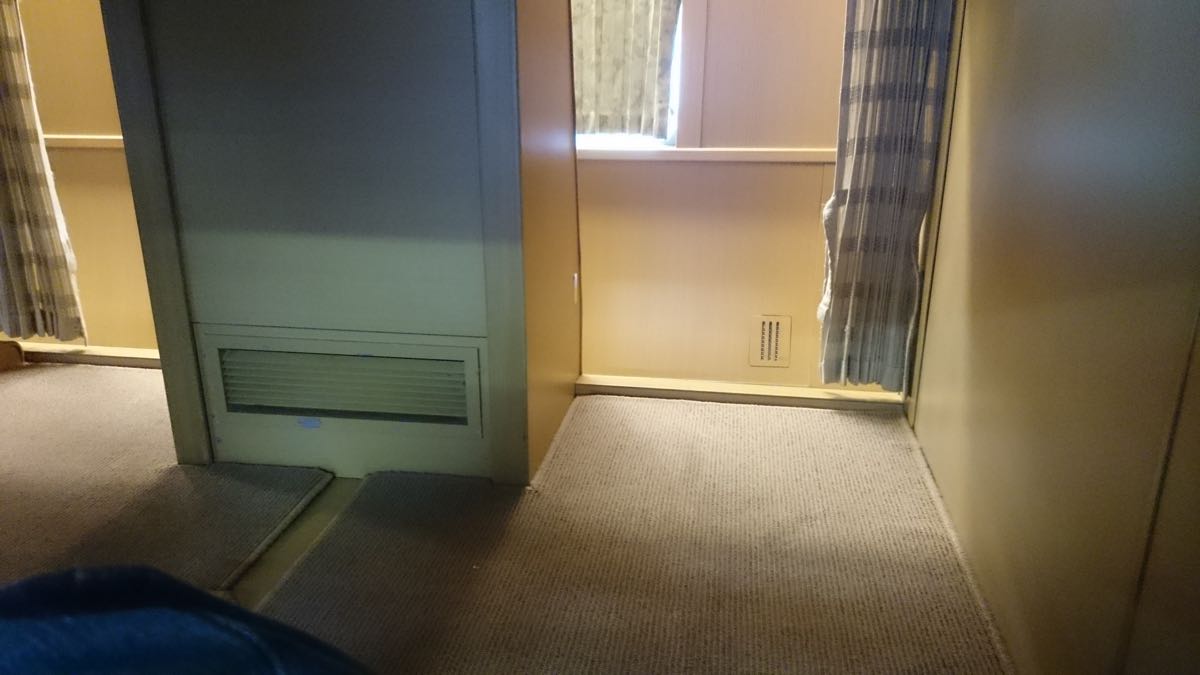
For those who don’t like the thought of “roughing” it, there are regular sleeper cars onboard, but with great comfort comes great responsibility fees (that are unfortunately not covered by the rail pass).
Using this itinerary, if you leave on the Sunrise Izumo/Seto you’ll arrive into Tokyo on the 8th day of your rail pass. And, if you connect to Narita Airport via the Airport Rapid it’ll be covered under your rail pass. Unfortunately, the much nicer Narita Express isn’t covered since it’s a limited express train and the rail pass will no longer cover the surcharges for it by that point. But, seeing as you’re still getting an 8th day for free, that certainly makes up for the slight decrease in speed!
Both of these above itineraries would cost well over $800 out of pocket for just ordinary coach seats, but again, using points from a fixed-value currency is the way to go here.
Other important tips
It’s best to reserve your seats as far in advance as possible, especially if you’re planning on using the night train in either direction as those seats can be popular.
To do so, first plan out what trains you plan on catching at hyperdia.com. Following that, find a reservations office and use the reservation forms they have available to make reserving a seat faster.
I’ve gone to Japan many times where I’ll see lots of folks struggling to communicate where they want to go while holding a rail pass in hand. Preplanning and writing out what you’re trying to do means less time in a station, and more time eating sushi.
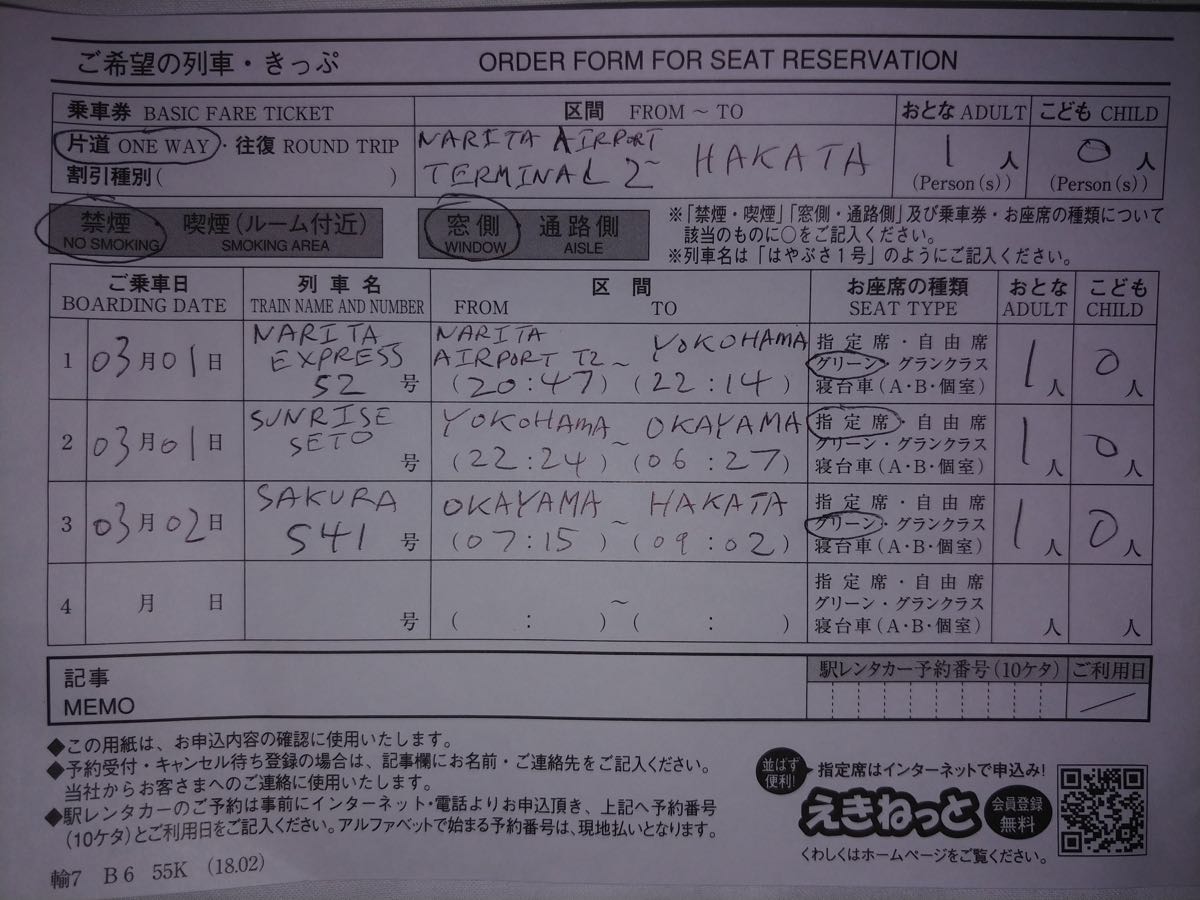
One big thing to note is that you can actually reserve seats into the future without having your Japan Rail Pass active on the day that you’re reserving them.
For example: if you arrived in Japan on March 1st, exchanged your voucher for a pass that same day, BUT have the pass scheduled to be active on March 7th, you’re allowed to make reservations on March 1st for trains on the 7th (through the end of your pass) even though you won’t be using your pass to travel just yet.
So if you’re really excited for the stunning scenery from that window seat (I know I would be), then absolutely take advantage of reserving early.
Also, courtesy of the above rule, you could spend a few days in Tokyo, Osaka, or any other point of entry city with an entirely different city pass and then explore the rest of Japan on your Japan Rail Pass.
Bottom line
It goes without saying that one of my absolute favorite places to visit is Japan, and it’s hard for me to not share some of the many beautiful places that I have visited.
I hope that after reading this, you might be inspired to plan a trip to some of the other parts of Japan that have less of the bright lights, and more of the heart and soul that make up this incredible land. Happy travels!
As a reminder, this post was guest-written by a fellow reader. Feedback is appreciated, but please keep the comments kind and constructive.





Thanks for the tips! My wife and I love Japan and have gone twice in the past few years. We're looking to plan another trip and the sample itineraries are pretty solid!
Love the suggestion for the free 8th day on the JR pass. Brilliant. I would recommend adding a section to explain the differences between the different cars though. Other than that I really enjoyed your witty writing style. Look forward to reading more from you in the future.
Absolutely use Hyperdia when you get to Japan to figure trains and routings. It made my travels a heck of a lot easier.
Also, I made my train reservations on the fly by using the clerks at the stations reservations offices. The wait times to see them were always much shorter in the early evenings. I just wrote on my phone the train numbers I wanted to book, then showed them to the clerk. Ridiculously simple and quick.
@Clem:
I used Green car pass for two weeks last November, only because I knew Green cars often had rows of single seats available. Not unlike a good busines class seat on some airlines in terms of privacy. But understand I paid a HEFTY premium for that privacy.
Agree with the article on JR pass - did a similar itinerary with some friends a few years ago before settling in Japan for about 2 years. Great way to see a lot of the country in a short time, but to also see the beautiful country side.
@ Rob A
Agree with your comments. Hard to argue with 4.25 hour train ride to Okayama yesterday from Tokyo Station, regional JR trains around Okayama, Osaka, Kyoto, train back to Tokyo, day trip around Tokyo, and JR lines like Yamanote. Suica covers subways nicely and JR Tokyo lines once JR pass expires or before activation. I am here for eight nights with seven day pass. Used Suica day of arrival in Tokyo at Haneda....
@ Rob A
Agree with your comments. Hard to argue with 4.25 hour train ride to Okayama yesterday from Tokyo Station, regional JR trains around Okayama, Osaka, Kyoto, train back to Tokyo, day trip around Tokyo, and JR lines like Yamanote. Suica covers subways nicely and JR Tokyo lines once JR pass expires or before activation. I am here for eight nights with seven day pass. Used Suica day of arrival in Tokyo at Haneda. Will leave 1000 yen on Suica pass for when I return in October.
Charles
Thank you for this article. My girlfriend and I are planning a Japan trip this coming fall and we were talking about this pass the other day. Very useful info.
@AS
NRT-KIX exists, for LCCs. Peach, Jetstar, Vanilla. They are dirt cheap as well. 4000 yen? I'd take that over Shinkansen every time unless I am on a time-sensitive business travel. Even including trip costs to the airport it costs about half.
But then again there is HND-ITM with Avios (we all have 4.5k Avios right?). Also Skymark HND-UKB (Kobe) could be useful for someone. Costs usually about 7000-8000 yen. Still cheaper than Shinkansen.
@O there is no NRT-KIX route like you're suggesting. NRT is largely international only, HND is the domestic airport in Tokyo and is much more convenient to reach. There is NRT-ITM but flying out of HND would be more common in any cases.
Between the comfortable buses and dirt cheap (and punctual) flights, I've never found reason to take the Shinkansen yet on my 3 trips to Japan. Tourists can get around for cheaper, unless time is truly of the essence.
@O What JZ posted: Haneda to Osaka International is a much faster & more sensible way to fly between Tokyo & Osaka than Narita to Kansai, the route you seem to be suggesting.
Also, no matter which part of Japan you're visiting, there's a range of travel passes available to tourists & it's worth checking out some of these before investing in a JR Pass
Thanks for an interesting article but the grammar needs to be tidied up
Having just returned from an 8 day trip to Japan, I find the comments interesting.
A 1 week JR train pass is definitely the way to go, especially if you intend to take day trips from city centers).
First off, most people use trains to travel in Japan because they are conveniently located (Narita is at least a 90 minute travel time/ Haneda an hour from the city center; for Kyoto/Osaka, the travel...
Having just returned from an 8 day trip to Japan, I find the comments interesting.
A 1 week JR train pass is definitely the way to go, especially if you intend to take day trips from city centers).
First off, most people use trains to travel in Japan because they are conveniently located (Narita is at least a 90 minute travel time/ Haneda an hour from the city center; for Kyoto/Osaka, the travel time is at least 1 hour), fast on time and economical.
The big plus is they don't require the hassle of going through security.
The train stations are modern, have restaurants, ATMs, shops and snack bars and are quite similar to European train stations in being cities unto themselves.
With the JR pass, you can use the JR Yamanote line in Tokyo to travel through the city center (would still recommend using a Pasmo or Suica IC card for Subway use).
For example, I purchased a pass, used it to go to Nagano from Tokyo (RT), next day I used it to visit Kamakura, and the following day for Mt Fuji.
I travelled to Kyoto on the Shinkansen (you are restricted here to the Hikari or slower trains, not the fastest Nozomi train), but still was a pleasant 2 hours and 40 minutes with seats that had outlets and food/beverage cart service. You couldn't go point to point by air in less time or have a more pleasant experience.
Pricing out the individual trains trips would have been much more expensive than the pass so it made sense for me. Plus, the idea of walking up to a train 10 minutes prior to departure and not having the hassle of a security line is priceless.
I have to agree with some of the other people - the regional passes often provide a better value unless you want to transit between regions multiple times. I got the JR West Wide pass which allowed me to travel from Kyoto to just beyond Miyajima. It cost about $120 for the 5-day pass and I didn't have to pre-pay or go through a travel agent - though I did save $10 by "reserving" one...
I have to agree with some of the other people - the regional passes often provide a better value unless you want to transit between regions multiple times. I got the JR West Wide pass which allowed me to travel from Kyoto to just beyond Miyajima. It cost about $120 for the 5-day pass and I didn't have to pre-pay or go through a travel agent - though I did save $10 by "reserving" one online which had no commitment to purchase. The network extended fairly wide north and south of the central Shinkansen route, and you could take any Shinkansen or Limited Express train (including Nozomi/Mizuho), but no seat reservations were allowed. The pass also worked in the ticket gates, so I didn't have to queue in the manual line each time.
Used the JR pass throughout Tokyo (only bought one ticket to an area not included in the central Tokyo link that cost about $2USD). Travelled Tokyo-Kyoto (and outside Kyoto on local rail)-Hiroshima using the pass and had no trouble at all. Another advantage is that you see a lot more from ground level than the sky.
You can also have luggage transferred from hotel to hotel without having to take it on the train.
Judging from the complaints about the animated Disney GIF, I'm beginning to think that 'outrage' will be added as an Olympic sport at the Tokyo Games in 2020.
I am on Hikari train to Okayama from Tokyo.
This is my fourth trip to Japan, all with green car JR passes. This 388 mlle trip will take a little over four hours. I can use local JR trains to visit some smaller towns and see sights not visited before. The weeek long pass will pay for itself.
Regional passes are better if staying in one area. Suica card is great for Tokyo subways and trains.
This was an interesting article and quite a change from the normal vacuous and badly written reports that usually are guaranteed to have the words "champagne", "Bose" and "credit card" in them. I've long learnt to immediately delete but will now keep my eye open in the hope that more worthwhile contributors will be posting.
Don’t understand the purpose of the animated gif; it’s from Disney’s Mulan, which is about a Chinese heroine who takes her father’s place in the army. This article is about train travel in Japan.
JR pass will only get u onto Hikari not Nozomi, which is the actual Shinkansen people use.
JR pass is useless in big cities, and it is super expensive.
@O
no one flies within japan will need NRT, there is an airport calles HND.
if one needs to travel multiple places on a budget, and to save some travel dollars by visiting multiple cities connected by shinkansen, the logic is flawed anyway.
avoid travel to maxmize your actual holiday time.
I personally found this article useful. I think it's a good idea in general to occasionally write about destination-related things, not just air travel. After all, for most of us air travel is just a way to get to a destination.
I have been to Japan several times and planning to come back for sure. I found JR pass useful. I would never fly Osaka-Tokyo - for a short flight like this it's not...
I personally found this article useful. I think it's a good idea in general to occasionally write about destination-related things, not just air travel. After all, for most of us air travel is just a way to get to a destination.
I have been to Japan several times and planning to come back for sure. I found JR pass useful. I would never fly Osaka-Tokyo - for a short flight like this it's not worth it to me to go to the airport ahead of time, go through security and all this, so shinkansen is the way to go. And even though I personally am familiar with JR pass, I think it's a good overview for those who might be going to Japan.
@Clem, I wouldn't recommend buying up to the green car (not much difference in the seat) -- except if travelling during a national holiday. Ordinary seats are often reserved well in advance. Green car seats usually remain available.
Also, remember that you can fly JAL within the country using avios. Most flights from Tokyo are still only 4500 avios. Most people would rather take a short flight to Sapporo rather than spending a day on the train.
http://www.gcmap.com/mapui?R=650mi%40nrt
Let me quote a Japanese website about an extremely reasonable flat-fee airfares for non-residents "JAL (and oneworld) and ANA each offer special fares and air passes for exclusive use by foreign visitors to Japan, which enable holders to fly anywhere within Japan for not much over 10,000 yen per flight (also referred to as "sector"). This is quite a competitive price on many domestic routes, especially on longer flights, such as flights from Tokyo to...
Let me quote a Japanese website about an extremely reasonable flat-fee airfares for non-residents "JAL (and oneworld) and ANA each offer special fares and air passes for exclusive use by foreign visitors to Japan, which enable holders to fly anywhere within Japan for not much over 10,000 yen per flight (also referred to as "sector"). This is quite a competitive price on many domestic routes, especially on longer flights, such as flights from Tokyo to Kyushu, Okinawa or Hokkaido.
Some of the air passes have to be purchased outside of Japan and before you leave for Japan. They can only be used by non-residents of Japan who arrive to and depart from Japan by an international flight."
That would be my preference when covering long distances across the country. This is a very convenient cash fare that allows to fly domestic ANA or JAL regardless of the airline on the international flight. I believe this fare would take you from Toronto all the way to Okinawa.
I'd strongly recommend a combination of a flat-rate domestic airfare and one of the passes offered by regional JR companies (West, East, and so on), at least for those who venture beyond Tokyo. Many of the regional passes allow you to travel on Nozomi trains, albeit seat reservation is not possible. However, there are always several clearly marked cars that have non-reserved seats only. Mainline train frequencies are truly remarkable. Therefore, finding a free seat should not be a problem. Passengers queue at the platform in an orderly fashion. Furthermore, you'll find the car number painted clearly on the platform floor (those vary according to the train type: Nozomi, Sakura, Kodami, Sanyo, and so on). Personally, I would not bother with Green (business class) Car. Standard class is in 3 +2 seat formation, looks rather utilitarian, but is always clean and comfortable. Power ports are also available.
The author claims to be an expert on Japan (enough to write an article) yet doesn't know the difference between Japanese and Chinese (Mulan gif). Do they understand there's a huge difference between those countries/cultures? The inclusion of that gif shows a stunning ignorance. The author is basically saying "All orientals are alike".
@Tom - Unless something has changed, you have to pay to make a reservation with the ticket machine. The in-person reservation with the pass is free.
Pretty good article. A few notes:
-More emphasis on Hyperdia. That app is amazing!
-I was able to buy a JR East pass online for a trip last year. I'm not sure if you can do that for the regular JR pass now, but it may save a trip to a travel agency.
-You can reserve seats at ticket machines in stations and you don't have to wait in line an speak with someone. I feel rushed when dealing with a person and the machine gives you more time to think about your seats.
@John
I meant Greater Osaka area which indeed includes Kyoto.
For both Tokyo and Kyoto travel flying in & out NRT, I'd rather use 1000 yen shuttle to get to Tokyo. Going to Kyoto, I would take JAL ITM-HND flight using Avios (4.5k O/W). From ITM to Kyoto the limousine bus costs 2600 yen R/T. Returning to NRT, there is a JAL ITM-NRT flight as well for the same-day connection if schedule allows. 4600...
@John
I meant Greater Osaka area which indeed includes Kyoto.
For both Tokyo and Kyoto travel flying in & out NRT, I'd rather use 1000 yen shuttle to get to Tokyo. Going to Kyoto, I would take JAL ITM-HND flight using Avios (4.5k O/W). From ITM to Kyoto the limousine bus costs 2600 yen R/T. Returning to NRT, there is a JAL ITM-NRT flight as well for the same-day connection if schedule allows. 4600 yen + 9k Avios + regional pass is better than $269, IMO.
Within Tokyo I'd just use Suica/Pasmo as the pass isn't really useful (probably except Tokyo Subway Ticket for foreigners), and within Kyoto I'd get whatever regional pass that is suited to the specific travel plan, or 500yen daily bus pass.
I didn't see @Rocky's comment earlier but I agree with him/her. Regional passes are more valuable in most cases. Also keep in mind that JR passes does not give the access to private railways, or shitetsu. And there are tons of them. Many tourist spots in Tokyo are actually not accessible via JR. Tsukiji, Odaiba, Ginza (unless you walk quite a bit from Shimbashi or Yurakucho), Roppongi, Asakusa, Tokyo Tower, Tokyo Skytree, etc. You'll have to purchase another ticket or pass even if you have an expensive JR pass.
I loved this article!!!
I enjoyed learning how to do this with points, and I really enjoyed learning about how to extend to 8 days. I also loved the trick about reserving before the pass is being used. VERY handy to know. I've been to Japan twice, both times for a week in Tokyo exclusively, so I'm thrilled to find out more about how to see the rest of the country.
Loved the photo of...
I loved this article!!!
I enjoyed learning how to do this with points, and I really enjoyed learning about how to extend to 8 days. I also loved the trick about reserving before the pass is being used. VERY handy to know. I've been to Japan twice, both times for a week in Tokyo exclusively, so I'm thrilled to find out more about how to see the rest of the country.
Loved the photo of the seats and the "seats", and the mention of the (admittedly bare-bones) amenities in the (reservable!) carpeted areas.
I enjoyed learning how much the average prices are and that one should shop around for the best price - that it's not fixed.
The author clearly states the JR pass is only good on certain lines, and delineates what those are, so anyone taking issue with that is just nitpicking, methinks. This isn't a comprehensive article, it's a specific "tips & tricks for this trip" article, which is excellent.
Bravo and hope to hear more from this Guest author.
Im with Paolo. Great article, except for the gif. No thanks.
@Dusty, @Aaron: Thanks for the great info.
How do you determine the seat selection on the reservation form? That didn't look to be translated to English.
Great article. Thank you.
One potential companion to the JR Pass is the "Keisei Skyliner + Tokyo Metro" ticket. The Skyliner is a competitor to Narita Express – ¥2200 one way or ¥4300 round-trip from Narita to Nippori or Ueno. They offer a Tokyo-wide Subway pass add-on to their Skyliner tickets: for ¥600 extra, you get a 24 Hour pass good anywhere on the Tokyo Metro and Toei private lines. ¥1000 will get you...
Great article. Thank you.
One potential companion to the JR Pass is the "Keisei Skyliner + Tokyo Metro" ticket. The Skyliner is a competitor to Narita Express – ¥2200 one way or ¥4300 round-trip from Narita to Nippori or Ueno. They offer a Tokyo-wide Subway pass add-on to their Skyliner tickets: for ¥600 extra, you get a 24 Hour pass good anywhere on the Tokyo Metro and Toei private lines. ¥1000 will get you a 48 hour pass, and ¥1300 will get you a 72 hour pass.
So for US$48 you've got your ride to and from the airport paid for, as well as 3 full, consecutive days of unlimited subway rides around Tokyo for sightseeing. This should give you some flexibility in thinking about which pass to buy.
Tourists often want to use their pass on the Narita Express from the airport into Tokyo, so they activate their pass when they land and then spend 3 days seeing the sights in Tokyo and not using the pass much. But if you avoid that trap, you can potentially buy a shorter and cheaper rail pass, only activating it when you're ready to do long-haul travel and "waste" fewer days.
I just bought the JR pass yesterday and am happy that I did. I fly on 4/8 to Osaka and will be based in Kyoto for a week. I am going for cherry blossom festival and due to warmer weather the cherry blossoms will have already peaked by the time I reach Kyoto. Buying plane tickets would have been a waste. For me there is great value with the JR train pass.
Just bought my JR-West 7-day pass for the Sanyo-San'in Area ($177) at their affiliate agency in SF. I plan to take in the sights between Kyoto and Fukuoka (Osaka, Himeji, Hiroshima, Miyajima, Beppo) starting next week. Sakura here I come! http://www.westjr.co.jp/global/en/
@Larry
In addition to what @Dusty said, certain regional passes allow you to use it for any 5 days within a 30 day period. So it allows you to stay in a certain city without extensive JR network and still get value out of it for the days you are moving around between cities. This is why the article above, while informative about the JR Rail Pass, was not really complete without going through certain...
@Larry
In addition to what @Dusty said, certain regional passes allow you to use it for any 5 days within a 30 day period. So it allows you to stay in a certain city without extensive JR network and still get value out of it for the days you are moving around between cities. This is why the article above, while informative about the JR Rail Pass, was not really complete without going through certain regional ones that are very useful.
Even for the "Sample Itinerary: Traveling to the Sapporo Snow Festival", that the author posted above, they could have probably saved money by not getting the nationwide pass, but actually the "JR Tohoku South Hokkaido Rail Pass", which is about $100 less expensive, though 1 day shorter. I personally used the "JR East Nagano Niigata" pass this last time I was in Japan in January, and I will be using the "JR East Tohoku Area" Pass the next time I will be there in October. Needless to say, there are a ton of different types of passes, you can see all of them here: https://www.japan-guide.com/e/e2357.html
The best part of the Japan rail network is that it favors those who do research. Even after having traveled there over 15 times in the last 8 years, I'm still uncovering more ways to save time and exploit various cards/passes/discounts etc. I mean you can read the terms of the JR passes (and they are pages long), and come up with some interesting itineraries.
For the provided itinerary for Sapporo, a JR East-South Pass is probably better.
http://www.jreasthokkaido.com/easthokkaido/e/
Just pay the 640 yen to get from Otaru to Sapporo.
But seeing that itinerary is so Sapporo based, may as well just fly there rather than the 5-hour train journey and save yourself a whole lot of time and hassle.
@Larry
One of the more useful regional passes for the first time traveler doing the Tokyo-Kyoto/Osaka route is the Hokuriku Arch pass. It covers Tokyo-Kyoto by way of Kanazawa, which in itself is a very neat destination. It's about 5k yen cheaper than the one-week nationwide JR pass, and takes you on the Hokuriku shinkansen to Kanazawa, and then a slower limited express train to Kyoto for a 5 hour~ journey time if you...
@Larry
One of the more useful regional passes for the first time traveler doing the Tokyo-Kyoto/Osaka route is the Hokuriku Arch pass. It covers Tokyo-Kyoto by way of Kanazawa, which in itself is a very neat destination. It's about 5k yen cheaper than the one-week nationwide JR pass, and takes you on the Hokuriku shinkansen to Kanazawa, and then a slower limited express train to Kyoto for a 5 hour~ journey time if you don't want to spend a night or two in Kanazawa for some reason.
I did use the 3 week JR pass for my previous 23 day trip, which was well worth it as I did travel up to Sendai, and down to Nagasaki, making frequent use of bullet trains and regional express trains. For a 7 day pass, the value is much less as flying becomes more competitive with LCCs, but I still prefer the train system just for the convenience over flying.
Great content.
I'd like to hear more about the regional passes, and I'd about buying up to the sleeper cars on night train. Would also like to see some comparisons as to how the economics work out if you're not changing locations everyday but rather spending two or three nights at each stop.
Predictably, a lot of people here with little imagination who don't realize that just because they didn't travel to certain places other...
Great content.
I'd like to hear more about the regional passes, and I'd about buying up to the sleeper cars on night train. Would also like to see some comparisons as to how the economics work out if you're not changing locations everyday but rather spending two or three nights at each stop.
Predictably, a lot of people here with little imagination who don't realize that just because they didn't travel to certain places other people won't want to. Personally, on a next visit to Japan I would be largely interested in traveling the countryside and less visited cities and towns. And, I really enjoy train travel.
Finally, although probably not of interest to the target market for this blog (and not often seen in Japan) hitchhiking is a particularly fascinating way of getting around Japan.
Nice article -
One small detail worth noting. Your animated gif at the beginning is from Disney's "Mulan" - which is about ancient imperial CHINA!!
But for typical travelers, especially first-time visitors, just stay in Greater Tokyo or Osaka area for several days.
How could you not what to go to Kyoto? In our case the cost of the NXt from Narita to Tokyo and the Shinkansen from Tokyo to Kyoto was the same as the rail pass. But then you have the flexibility to go to other places as well as use the JR line that loops through Tokyo.
The JR pass is useful particularly if a traveler is planning on scheduling several Shinkansen trips, taking round trip Narita express train service to downtown Tokyo, and spending a week or more in Tokyo for JR trains. Otherwise, it is just as easy to fly domestic and use car services, taxis and even buses. For example, when flying into Osaka, I prefer to use an airport bus to downtown. The bus stops right outside the...
The JR pass is useful particularly if a traveler is planning on scheduling several Shinkansen trips, taking round trip Narita express train service to downtown Tokyo, and spending a week or more in Tokyo for JR trains. Otherwise, it is just as easy to fly domestic and use car services, taxis and even buses. For example, when flying into Osaka, I prefer to use an airport bus to downtown. The bus stops right outside the terminal just as in Narita and is quite a civilized and reasonable way to travel.
We went to Japan this past September and used a 7 day rail pass over a 10 day trip. The only additional train ticket we bought was from NRT to Shinjuku station on arrival. We then had the pass activated for Sunday to Saturday (our departure). A couple of notes:
Use this site: http://www.hyperdia.com/en/ I'm pretty shocked it was not mentioned in the article. I found this valuable for route planning and used print outs...
We went to Japan this past September and used a 7 day rail pass over a 10 day trip. The only additional train ticket we bought was from NRT to Shinjuku station on arrival. We then had the pass activated for Sunday to Saturday (our departure). A couple of notes:
Use this site: http://www.hyperdia.com/en/ I'm pretty shocked it was not mentioned in the article. I found this valuable for route planning and used print outs from here to make all of our seat reservations when we activated the pass. It's worth doing for some of the busier routes such as Kyoto to Tokyo. You can also find some sites online that will tell you if the 7 day, 14 day, 21 day or no pass at all is worth it based on your route.
My wife was pregnant at the time and we paid up for the green car so she would be more comfortable. We found it very comfortable but I also think the economy car looked fine as well.
Our itinerary:
Thursday: Land in NRT and transit to Shinjuku (this was on a paid ticket)
Sunday: 1st day of JR pass. Transit to Takayama (All on JR pass)
Tuesday: Transit Takayama to Kyoto (All on JR pass)
Friday: Transit Kyoto to Hakone (JR pass plus cheap ticket on local Hakone train)
Saturday: Transit Hakone to NRT (JR pass plus cheap ticket on local Hakone train)
The routes posted in this article are really aggressive time wise.
Great article, although I'm going to Japan next month for a few weeks, I am planning on getting a rail pass and would have loved to see a section with pros/cons of getting a green car vs ordinary car pass.
I loved the JR pass. When you consider the cost of getting to and from nrt, a single r/t can make the pass worth it. Add in the fact that you can use it on JR trains within tokyo and it really makes life easier. It's important to note that unlike most major cities, urban transit in tokyo is operated by a web of different companies that don't allow free xfers. JR does, in fact,...
I loved the JR pass. When you consider the cost of getting to and from nrt, a single r/t can make the pass worth it. Add in the fact that you can use it on JR trains within tokyo and it really makes life easier. It's important to note that unlike most major cities, urban transit in tokyo is operated by a web of different companies that don't allow free xfers. JR does, in fact, operate several lines that hit a number of useful stops in and around central tokyo that are covered by the pass -- we easily made do with the yamanote line and a few one-ways on the other subway companies. An extra benefit is free access to the shopping arcades that are within the paid-zones of stations.
Given Lucky's unhealthy addiction to uber, it's nice to see a post about train travel within a destination.
Yes, very good piece. Need more of the kind of stuff.
The only negative: the distractive and meaningless Gif visual. People over 25 tend to dislike these and while this one is nowhere near as moronic as those offered by other posters on the site ( often featuring ridiculous characters from unknown tv shows about housewives), it would be better to leave it out.
But the piece is great and hope for more.
I don't rememebr what train pass I had 6 years ago, but traveling by train was really pleasant and I was surprised with the amount of leg room on the trains (everything else in Japan being small).
@ITST
Well I mean in the scenario I described one would imagine that a first time visitor is coming from Osaka or Tokyo and wouldn’t just roll up to Kyushu.
Regardless, the whole JR pass thing is more for budget/family travelers. Flying is way fast and more convenient.
ITST
There is also the convenience of the pass. For local trains in Tokyo, for instance, you just flash your pass at the manned barrier and walk on through.
When I was there I used that "circle line" train a lot - and the pass works on that
And it covers the monorail to Haneda as well as the Narita Express
Thanks mate, will keep this article in mind when planing a trip to Japan with the crew.
@JZ very interesting comment. It takes about 40 minutes to get to Narita from Tokyo. That alone costs abou 2,500 yen. Then waiting at the airport, boarding, security and once you get to Osaka it’s a fair hike to central Osaka.
The Shinkansen gets you door to door in under 3 hours. Flying makes no sense unless you want to burn time. We flew from Tokyo to Osaka and it took close to 5 hours...
@JZ very interesting comment. It takes about 40 minutes to get to Narita from Tokyo. That alone costs abou 2,500 yen. Then waiting at the airport, boarding, security and once you get to Osaka it’s a fair hike to central Osaka.
The Shinkansen gets you door to door in under 3 hours. Flying makes no sense unless you want to burn time. We flew from Tokyo to Osaka and it took close to 5 hours door to door. Shinkansen was 3. Unless you absolutely have to I would always recommend the Shinkansen.
Coming from a western country I can understand how it’s hard to believe that a train can be quicker than a plane.
Great post. I used my JR pass years ago for great value. From memory the fastest, most popular JR-operated 'Nozomi' bullet trains are excluded from the JR pass?
When things to do to have to save money get complicated I stay away from the country altogether.
@Ethflyer
"If you’re a student on a budget and you want to hit a bunch of towns in a specific region (ie Kyushu), the bullet train is by far the best."
Yes, but in that case JR Northern Kyushu would be better.
I don't usually recommend JR pass.
It's only useful when--
1) You're a train maniac. You want to binge ride on Shinkansen. Then go for it.
2) You want to visit more than 3 areas with Shinkansen (or limited express).
Look at the sample itinerary. You have to travel between cities every single day and that's typically more than 3 hours one way. It's not really ideal. Typically you want to stay...
I don't usually recommend JR pass.
It's only useful when--
1) You're a train maniac. You want to binge ride on Shinkansen. Then go for it.
2) You want to visit more than 3 areas with Shinkansen (or limited express).
Look at the sample itinerary. You have to travel between cities every single day and that's typically more than 3 hours one way. It's not really ideal. Typically you want to stay at one destination more than 2 days.
Surely for small cities/towns you can just spend one day or less, but usually that can be done with smaller-area pass with much cheaper rate.
I assume the guest author is indeed a train maniac, as s/he knows the trick of 8th day overnight travel. If you follow this itinerary, yes you will save a lot. But for typical travelers, especially first-time visitors, just stay in Greater Tokyo or Osaka area for several days.
And for simple one-way travel, just buying Shinkansen outright would be much cheaper. (Tokyo to Osaka is about $120.) Or as JZ mentioned, foreigner-only JAL/ANA discount fare. Or LCCs. Or our beloved Avios (almost every route within Japan costs 4500 miles).
@jz That’s completely untrue. If you’re a student on a budget and you want to hit a bunch of towns in a specific region (ie Kyushu), the bullet train is by far the best. Especially if you don’t have a set itinerary. It’s by far the most cost effective unless you want to spend hours sitting on busses.
If you want to go from Tokyo to Sapporo to Fukuoka then yeah take a plane, but all these flights add up and a one week rail pass is cheaper.
This was super informative to me. Especially since I’m planning a trip to Japan this summer. Thank you so much! #keepthiswriter
Sorry but couldn't disagree more. JR is a wonderful option to travel in Japan but the Japan Rail Pass is useful only if you want to take the Shinkansen route of Osaka-Nagoya-Tokyo (where no other JR regional rail passes gives access to this route). If you're visiting only a region or 2 in Japan, a JR regional pass is normally a cheaper (and better) way.
For foreigners travelling in Japan by JAL or ANA there...
Sorry but couldn't disagree more. JR is a wonderful option to travel in Japan but the Japan Rail Pass is useful only if you want to take the Shinkansen route of Osaka-Nagoya-Tokyo (where no other JR regional rail passes gives access to this route). If you're visiting only a region or 2 in Japan, a JR regional pass is normally a cheaper (and better) way.
For foreigners travelling in Japan by JAL or ANA there are also special discount tickets for intra-Japan travel. Good for mileage lovers and favourite for Asians mileage runners for JAL/ANA status.
Lucky, why don't you try to invite an Asian-based writer to OMAAT? Plenty of interesting routes and mileage runs within the Asia region too.
Very nice, funny & informative. Would definitely like to read more from you on the blog... Cheers & Happy Travel's
Enjoyed this and very useful for the Rugby World Cup next year.
@Max - Blue/Economy, Green/Business effectively, mentioned near the top.
Great article, but can somebody tell me the difference between green and blue pass?
jr pass is by far the wrost option to effectively travel in japan. useless in osaka and tokyo, and u can fly between osaka and tokyo (and other major citied) with JAL JEP, cheap and able to score yourself some miles.